Guidelines for 650B Conversions
by Ed 650Braley • July 03, 2023
Originally Published May 5, 2007
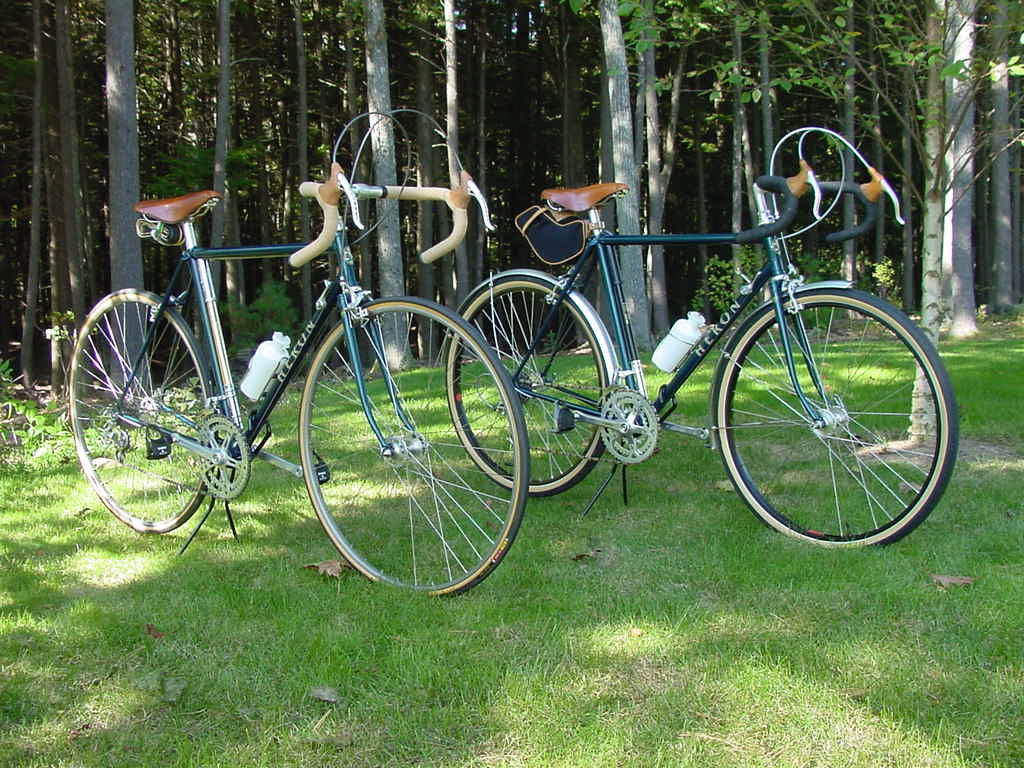
In the last few 650Blog articles I've introduced the 650B wheel and shown a few bikes configured with them. Perhaps now you're curious, and thinking about cycling from a different perspective. Maybe you're wondering about that dirt road that you've always passed-by, or that alluring gravel path that runs down by the river... maybe you'd just like to explore some new roads and keep right on going, whatever the weather or surface conditions become. You're thinking about having your own 650B experience. But you aren't yet ready to buy a new 650B specific frame and build it up. Well Dear Reader, this article is for you.
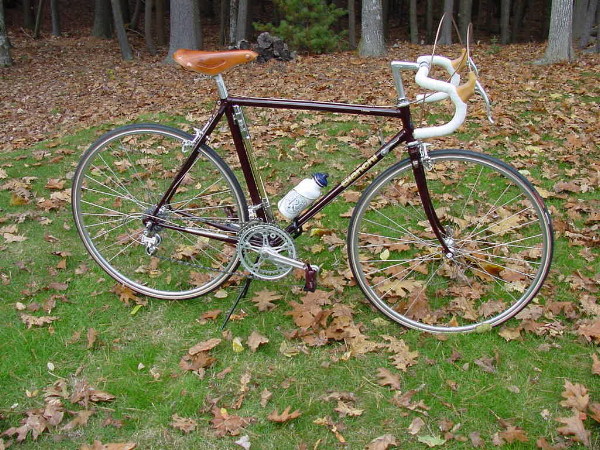
As I've mentioned previously, there are literally thousands of nice older road bikes that can be converted to roll on 650B wheels. And this is what makes it possible for you to try this wheel format without having to buy a whole new 650B bike or frame. Provided that a few of the frame dimensions are within range, it's possible to convert many 700C, and even some 27 inch wheeled bicycles, to 650B. And a 650B converted bike can be amazingly good! In many cases the resultant 650B bicycle is actually superior to the previous configuration with the bigger wheels. Sometimes they come together in such a way as to make you wonder if they weren't actually planned to be 650B machines. As a recap, you'll recall that the overall diameter of a 650x38B wheel is very close to that of a standard 700C wheel with a 23mm tire. So, when you do a conversion, you're decreasing the rim diameter a bit and making up most of the difference by using a bigger tire.

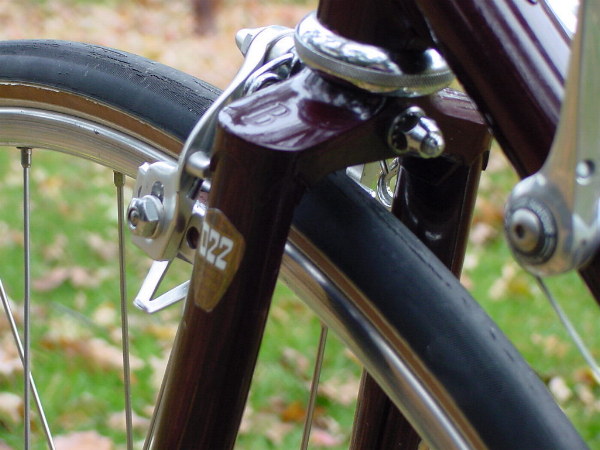
Then the space remaining provides enough room to fit practical fenders. Due to the fact that the rotating mass of the rim and tire bead is a little closer to the axle, the wheel still accelerates quickly, even with this bigger tire. So your newly converted 650B bike still handles beautifully, it accelerates quickly, and it can go places where it would never be comfortable or safe to ride on the skinny tires. It's a phenomenal transformation!
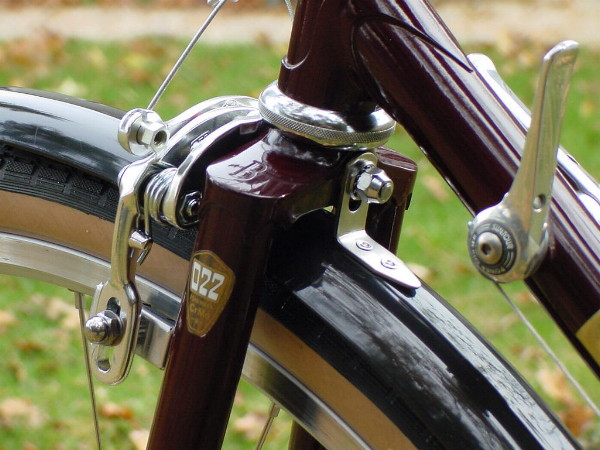
What do you look for in a bike that you want to convert to 650B?
Frequently I'm contacted by people who are ready to try their own 650B conversion, and I usually reply with a list of criteria and considerations to help them determine if the project should be pursued. In this edition of the 650Blog, I'll provide a summary of the critical attributes and other things to consider when contemplating a 650B conversion project. First off, let me say that in general, the lugged steel framed Japanese sport-touring bikes of the early eighties are some of the best candidates. They're well made, are very common, and can be a great value. Models with 700C wheels, short-reach sidepull caliper brakes, fender eyelets, and real fork crowns have the right basic attributes for conversion. These bikes were imported in large quantities, and many of them sat unused for many years as the mountain bike boom captured the majority of the attention in the sport of cycling. There are many good 650B conversion candidates from other countries and market segments, too. Several people have successfully converted American and European racing and touring bikes to 650B. However, bikes that have cantilever brakes are not viable candidates for 650B conversion due to the fixed placement of the canti bosses. The bosses will be right next to the 650B rim and proper brake adjustment is not possible without relocating these brazed-on fittings. Whatever the make, model, or type of bike, it has to meet a few simple criteria to be most easily converted to 650B. Now, let's narrow it down further. There are three critical frame issues that need to be surveyed on any prospective 650B conversion candidate: tire clearance, brake reach, and bottom bracket height. A metal tape measure with a metric scale is all you need for this job.

Tire Clearance
The unique charm of 650B wheeled bicycles is the sensation of riding on big puffy lightweight tires that absorb road shock, handle loose surfaces, and still accelerate quickly. The best 650B conversion bicycles will accommodate a range of tires from 32mm to 38mm wide. Your frame will need clearance for these bigger tires. The widest part of a 650x38B tire is located 320mm from the axle center.

Most of the 38mm tires actually measure somewhere between 34mm and 37mm when inflated to 50psi, so I recommend tire clearance of no less than 42mm. You will need to measure for this clearance at a distance of 320mm from the axle center in the areas under the fork crown, between the seat stays and between the chainstays. You can run the narrower 650B tires in a bike which has less than the recommended 42mm clearance, but the narrow tires can create another problem that I'll explain a little further on.

Brake Reach
You will almost certainly need to change the existing brakes on your bike for a 700C to 650B conversion because the difference in rim size is greater than the range of adjustment provided by most brakes. The 650B rim has a bead seat diameter of 584mm, whereas the 700C rim is 622mm, and the 27inch rim is larger still at 630mm. If you convert from 700C to 650B the brakes will need to adjust downward half of that 38mm difference, or another 19mm. A 27inch to 650B conversion will require an additional 23mm of brake reach. So, you can look at the brakes on your bike and measure the distance from the center of the brake mounting hole to the center of the rim to get a base number. Then, add the increase to determine the new brake reach. A brake reach requirement somewhere between 58mm and 75mm will allow you to fit readily available brakes to your 650B converted bike. For example, if your bike has 700C wheels and short reach brakes with the pads set at mid-slot, which is 44mm, then the new reach requirement will be 44mm + 19mm = 63mm.


There are a few caliper brake options from which to choose when configuring a bike for 650B conversion. But the most common are the old centerpull style caliper and the modern extra long reach dual-pivot caliper brake. There are other obscure, unusual, and rare brakes that can be used, but that's a subject beyond the scope of this article.

The new Tektro R556 dual pivot brake that I recently reviewed for Bikeman is the best current production caliper available for 650B conversions. It's a fantastic brake. However, it is only supplied with mounting bolts for recessed allen nuts. If your bike uses this type of brake attachment and has a reach requirement in the 55mm to 73mm range, then you're in luck. If your bike uses external hex nuts for brake attachments, it may be possible to drill out the back side of the fork crown for a recessed mounted front brake. If the rear brake bridge has a cast tunnel for brake mounting, it may be possible to drill that out and use a recessed allen nut there too. Sometimes it's possible to drill the backside of the fork crown and use the rear brake with a long problem solvers type recessed allen nut in the front, and then attach the front brake with a hex nut on its longer bolt on the brake bridge in the rear position. And of course you'll want to use the proper radiused washers to fit the profile of the round tubes if that's the interface for the brake mount. Most shops can supply these bits if you need them. But let's assume that you're not quite ready to take the drill to your bike. In this case you'll need hex nutted brakes that will go the distance for the new reach requirement. The old centerpull calipers are typically used in this situation. Centerpull brakes were commonly available in 65mm and 75mm reach models, and most of the 650B conversions will require the longer 75mm model. Centerpull calipers will also require cable hangers, so you will need to retrofit a hanger in the headset stack, or somewhere on the stem in front. A corresponding cable hanger will need to be attached somewhere on the seat post binder or thereabouts for the rear brake. Again, your local shop can be a source for these items, and Bikeman offers many of them in the online store as well.

Bottom Bracket Height
The bottom bracket height is the distance from the center of the crank spindle to the floor, measured when the bike is standing upright on a level surface. The frame designer sets a target bottom bracket height which he considers to be reasonably safe in order to avoid pedal strike when the bicycle is pedaled around corners. Because if you strike a pedal hard while cornering, the rear wheel will un-weight, and you'll crash. Needless to say, this is to be avoided! So the frame designer considers the tire size, crank length, and type of pedals he'll configure on the finished bicycle, and specifies a frame dimension which will yield the desired bottom bracket height with the chosen tires. The frame dimension which the designer specifies is called bottom bracket drop, it's the distance below the axle centerline to the bottom bracket centerline. If you have the geometry tables for your bike, look for a drop figure between 65mm and 72mm. But unless you have the frame geometry tables, you'll need to work with the height that you can measure directly on your bike. The bottom bracket will come down a bit with 650B tires, you can expect a lowering of about 8mm-10mm converting from 700x23mm tires to 650x38B tires. For reference, the old racing standard for bottom bracket height is 267mm, and that was determined when people rode toe clips and straps on 170mm cranks. It's still a good guideline. So a good 650B conversion candidate will have a bottom bracket height of about 275mm with 23mm 700C tires. More is better, but anything lower than 270 is risky.


I usually ride narrow or low Q factor cranksets with 170mm arms, and I ride clipless pedals. Most of my own bikes have bottom bracket heights between 260mm and 268mm after 650B conversion, and that's in the ideal range for me. If you run longer crank arms, cranksets which have a wide Q factor, or use big wide pedals, then you'll have an increased likelihood of pedal strike if you lean it over while pedaling, so take that into consideration. Some people will solve tire clearance issues by fitting smaller tires, but this works against the preservation of bottom bracket height. And again, to get the maximum 650B effect you really want to run those nice puffy 650x38B tires at 40-50psi anyway, so keep that in mind when you survey your 650B conversion candidate. If all of these dimensional criteria are met, the final thing that I look for in a 650B conversion candidate is the provision to mount fenders. Riding in the rain, on gravel roads and over dirt paths is fun and it's part of the 650B experience. Having full fenders to keep the spray off of your bike and off yourself just makes that all the better. So I like to have fender eyelets front and rear, and a chainstay bridge for anchoring the rear fender is also good to have. But the absence of fender fitments isn't a show stopper, you can still attach the fender stays with p-clips and use zip ties where necessary. That's it!

Although I've given you a fairly specific list of parameters, it's amazing how many bicycles were built which meet them. There were literally millions of road bikes built in the period from the late seventies through the early nineties, and a large percentage of these nice older bikes make excellent 650B conversions. You may already have a suitable older bike that you haven't been riding much lately, or there could be one available locally, and you can frequently find them on eBay. With the information that I've provided in this article you can now probably look at pictures of bikes and have a pretty good sense for the viability of converting them to 650B wheels.
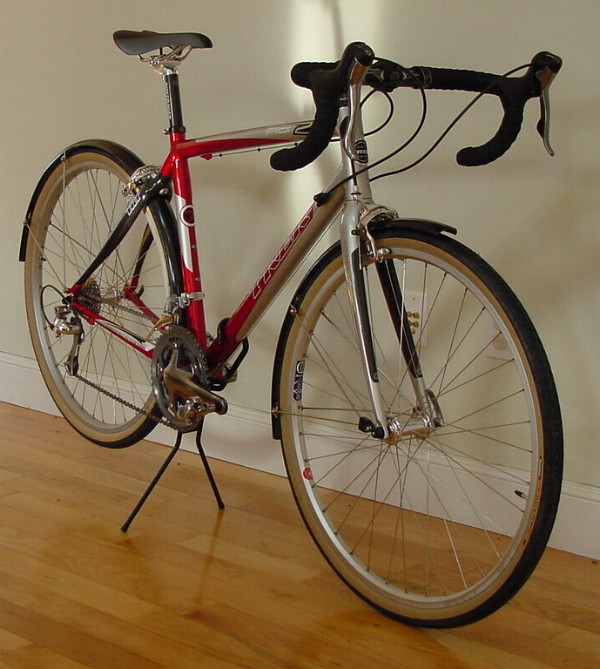

Remember, converting a suitable bike to 650B is a no-risk proposition because you're not making any permanent modifications to the bike. If you try the conversion and decide that you're not happy with the bike afterwards, you can simply put it back to 700C. And then you can try the wheels and brakes on another bike. I've done that, but most of the bikes that I've converted remain configured with 650B wheels because I've been very pleased with the results. With a suitable used road bike, a 650B wheelset, a brakeset, and some fenders, you could assemble a versatile, comfortable, and fun machine that may become one of your favorite bikes. You'll ride it fast, and you'll ride it slowly. You'll cruise along over those dirt roads, gravel paths, and broken roadways, - and you'll be hooked on the 650B experience. Try it!
Ed 650Braley
